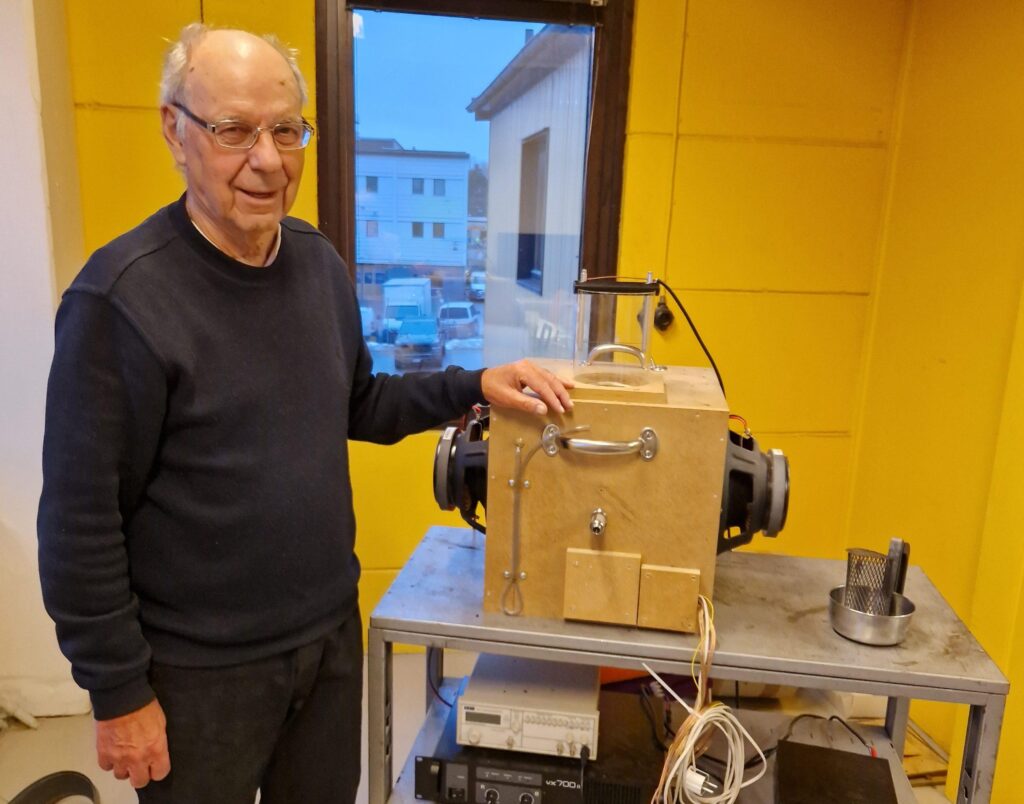Title: Infrasound Technology: A Game Changer for Planetary Defense Against Cosmic Threats
In the expansive universe, various threats hover beyond our atmosphere, ranging from errant asteroids to fragments of space debris, posing significant challenges to our planetary security. As we deepen our comprehension of these celestial risks, we simultaneously enhance our toolkit with cutting-edge technologies aimed at safeguarding Earth. One such revolutionary advancement is infrasound technology—a technique that utilizes low-frequency sound waves capable of traversing great distances. This technology provides critical insights into atmospheric events and movements beyond our planet. In this article, we will examine how infrasound is becoming an essential asset in planetary defense, allowing scientists to detect and monitor extraterrestrial threats with remarkable precision. Join us as we investigate the mechanisms, applications, and broader implications of this innovative technology that positions humanity to better protect itself in an ever-changing cosmos.
Infrasound Technology: Key Player in Identifying Cosmic Dangers
Infrasound refers to sound waves with frequencies below human hearing capabilities and has emerged as a vital instrument within the field of planetary defense. By employing advanced sensors designed to capture these low-frequency waves, researchers can observe various cosmic phenomena that may endanger Earth. *This technology plays a crucial role in detecting natural occurrences like volcanic eruptions and meteor strikes*, enhancing our understanding of Earth’s interactions with celestial entities. Beyond simple detection capabilities, infrasound can offer early warnings—potentially granting us valuable time to prepare for unexpected events that could lead to disastrous outcomes.
Furthermore, the utility of infrasound extends well beyond terrestrial hazards. Recent research has amassed substantial data illustrating how it can *monitor near-Earth objects (NEOs)* effectively—allowing scientists to track trajectories that might result in collisions with Earth. To highlight the importance of this technological advancement, consider the following comparison between traditional monitoring methods and those utilizing infrasound:
| Method | Detection Timeframe | Effective Range |
|---|---|---|
| Aerial observation | Difficulties span days or weeks | Around 100 kilometers |
| Sonic radar systems | A few hours up to days |
| >Extensive global reach | >Limited localized coverage | tr /> |
| >Clear low-frequency signals | >Higher frequency sounds often obscured | tr /> |
| >Near real-time responses | >Delayed due collection methods.< /
t d> tr /> |
Future Prospects: Expanding Research Collaborations for Planetary Defense Initiatives
The future trajectory concerning effective planetary defense relies heavily upon enhancing collaborative research efforts leveraging groundbreaking technologies like infra-sounds . As concerns over near-Earth objects (NEOs) persist , fostering partnerships among governmental agencies , academic institutions , private enterprises becomes paramount . Such collaborations pave pathways toward achieving significant advancements related both detection tracking processes equipping us necessary tools respond proactively against looming threats ! To maximize efficacy derived from infra-sounds , interdisciplinary teams must prioritize :
- Merging Data Sources : Strong Combining signals captured via infra-sounds alongside radar optical observations yields comprehensive monitoring frameworks !
-   ; Raising Public Awareness : Engaging citizens stakeholders about importance collective action surrounding strategies ensures widespread support participation !
Continued investments directed towards research initiatives catalyze further advancements within established protocols governing effective defenses against cosmic dangers . Exploring funding opportunities supporting collaborative endeavors streamlines resource allocation efficiently too ! Potential initiatives could encompass:
< th >  ;Funding Source   ;Potential Impact tr /> < t d >  ;Government Grants Support large-scale projects utilizing infra-sounds.Private Sector Investments Drive innovation sensor tech analysis.International Collaborations Share knowledge resources globally unify strategies.< / t r /> Conclusion
As humanity stands poised on brink new era encompassing effective measures defending against external forces threatening existence itself , potentials inherent within using innovative solutions such as Infra-Sounding emerge not merely scientific breakthroughs but rather beacons hope guiding future generations forward . Detecting analyzing low frequency vibrations emanating distant celestial bodies opens windows possibilities previously unimagined while offering insights potentially shielding planet unseen perils lurking just outside reach .
While exploration continues throughout vast expanses universe synergy created through combining cutting edge technologies collaborative efforts remains crucial ensuring safety world around us today tomorrow alike . Researchers delving deeper into realms offered via Infra-Sounding remind fragility life amidst grandeur cosmos reminding everyone embrace advancements encourages proactive approaches understanding place amongst stars above them all .
Looking ahead optimism prevails knowing careful studies relentless curiosity unlock mysteries lie beyond horizon journey begun together shaping safer brighter futures generations yet come!
-   ; Raising Public Awareness : Engaging citizens stakeholders about importance collective action surrounding strategies ensures widespread support participation !
